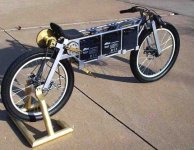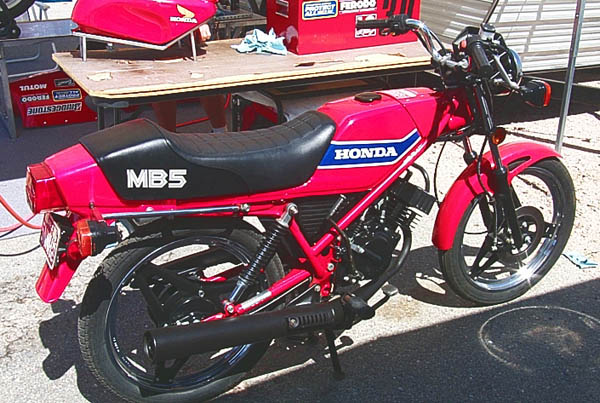safe
1 GW
- Joined
- Dec 22, 2006
- Messages
- 5,681
This is my (newly painted) electric bike that I made from scratch. It's about as far as SLA will go. (well I could imagine a few improvements) The next project will be NiMh and I'll be searching for speeds near 60 mph. The present range is about 25 miles or an hour of hard riding. Oh, and the 46 mph is not on true flat land (that was the top speed attained here in the relatively flat midwest) the real world limit is more like 38 - 40 mph on the flat.
Note: This used to be called "46 MPH Electric Bike".
Note: This used to be called "46 MPH Electric Bike".







